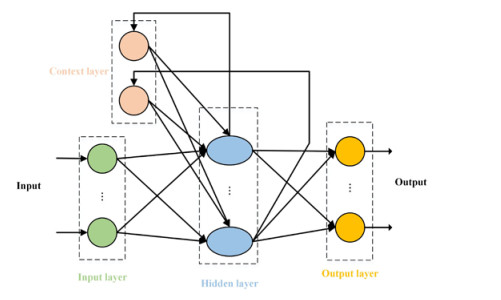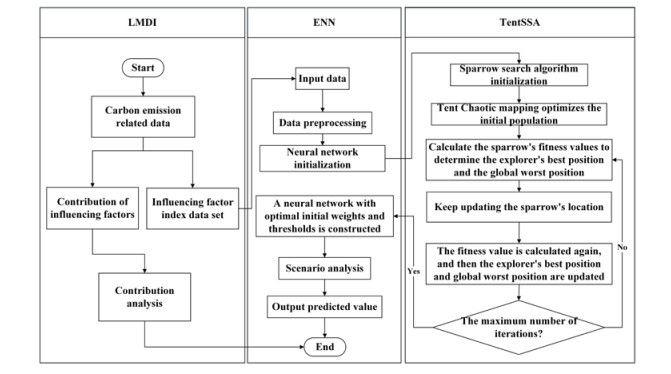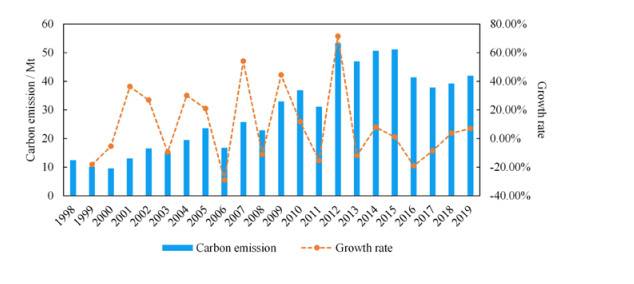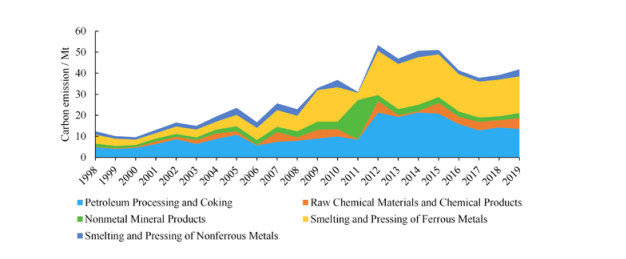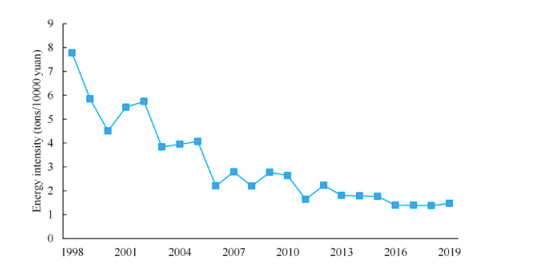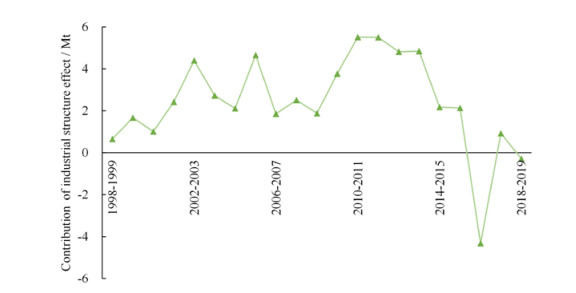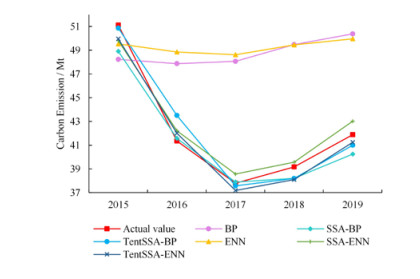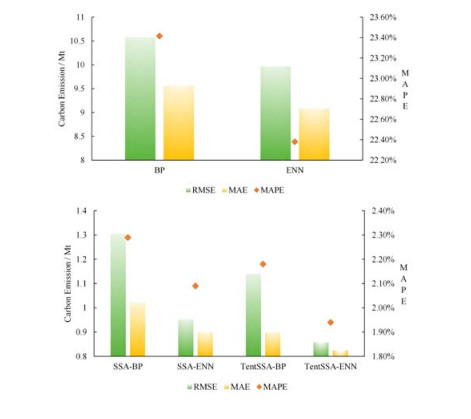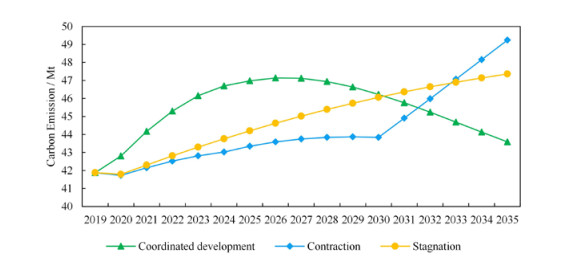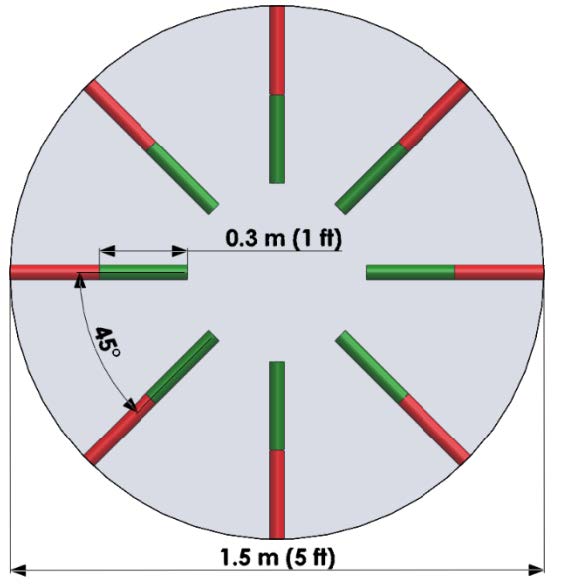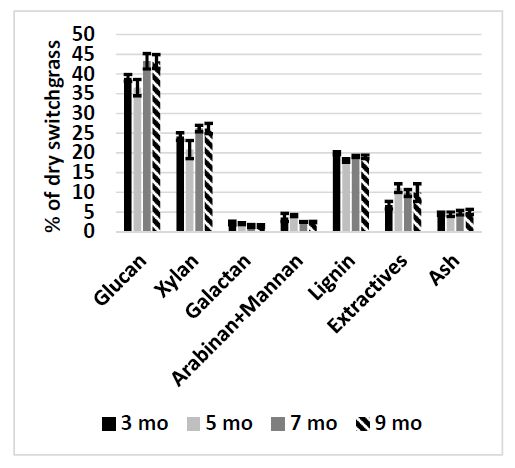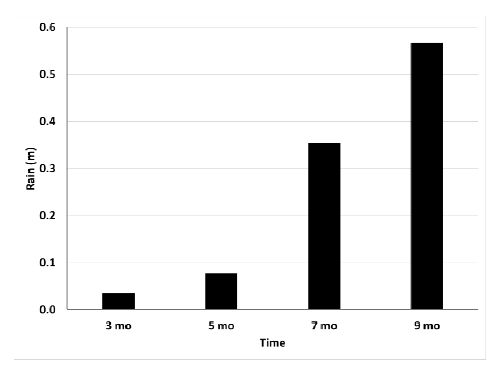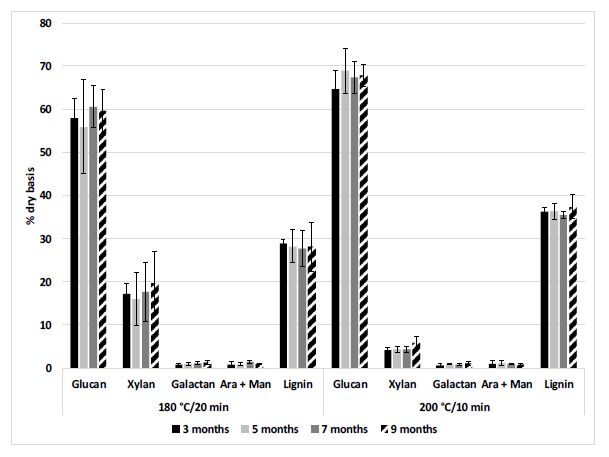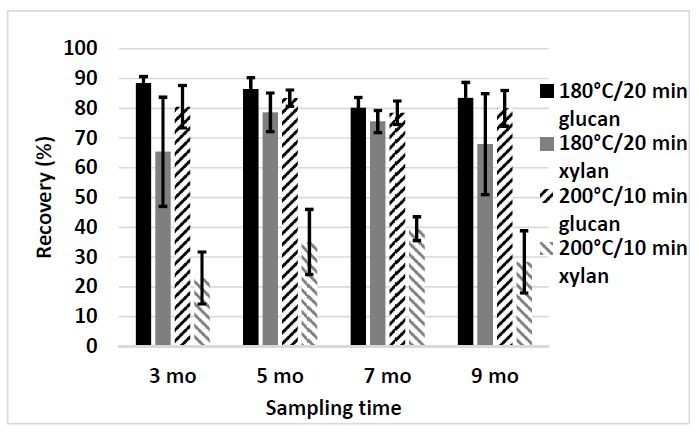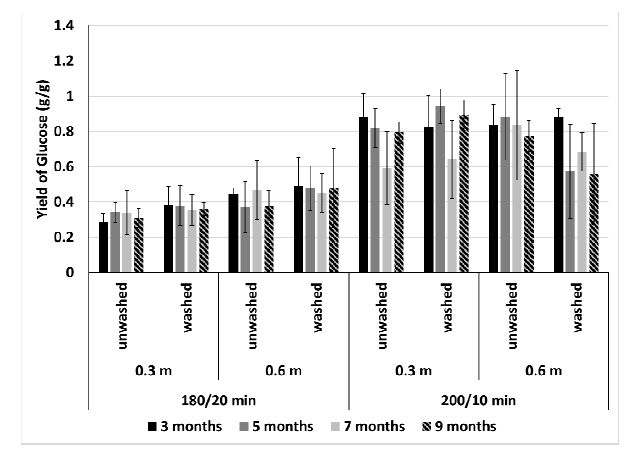Perennial grasses that would be used for bioenergy and bioproducts production will need to be stored for various periods of time to ensure a continual feedstock supply to a bioprocessing facility. The effects of storage practices on grass composition and the response of grasses to subsequent bioprocesses such as pretreatment and enzymatic hydrolysis needs to be understood to develop the most efficient storage protocols. This study examined the effect of outdoor storage of round switchgrass bales on composition before and after liquid hot water pretreatment (LHW) and enzymatic hydrolysis. This study also examined the effect of washing LHW pretreated biomass prior to enzymatic hydrolysis. It was determined that switchgrass composition after baling was stable. As expected, glucan and lignin contents increased after LHW due to decreases in xylan and galactan. Washing biomass prior to enzymatic hydrolysis reduced saccharification, especially in samples from the interior of the bale, by at least 5%.
1.
Introduction
Since the first Industrial Revolution, human consumption of fossil energy in production and life has increased greatly, and excessive carbon dioxide, methane and other greenhouse gases have been emitted into the atmosphere. The continuous accumulation of greenhouse gases has caused the gradual warming of the global climate, and a series of natural disasters such as drought, flood, average surface temperature and sea level rise have followed one after another, which has caused great negative impacts on the living environment of human beings and the orderly development of human society. In April 2022, the Working Group III (WGIII) report of the Intergovernmental Panel on Climate Change (IPCC), "Climate Change 2022: Mitigation of Climate Change", was officially released [1]. The report pointed out that global greenhouse gas emissions from 2010 to 2019 are still very high, although their growth rate has gradually declined, but the task of reducing emissions is still a long way to go.
As the global largest developing country, Chinese industry has developed rapidly since its founding. China has become a major carbon emitter as it grows its economy because of its heavy use of coal, oil, natural gas and other fuels in industrial production. In the face of global warming, China gradually recognizes the importance of emission reduction. In 2014, the Chinese government for the first time proposed "striving for an early peak of total carbon dioxide emissions" at the UN climate Summit. In 2015, China submitted a China Action Plan to the United Nations to address climate change, which stated that carbon emissions would peak around 2030 and the intensity of carbon emissions would decrease by 60% compared to 2005[2]. Under the above conditions, with the deepening of research, China has gradually become the main promoter and leader of "dual carbon" research[3].
In the face of complex and severe environmental situation, China's "dual carbon" policy has put forward specific requirements for each province. The implementation of emission reduction policies and measures in various provinces will largely determine whether China can achieve its carbon reduction targets on time. As an important industrial province and manufacturing province in the country, and one of the first low-carbon pilot provinces, Shaanxi needs to actively assume corresponding responsibilities and obligations. The implementation plan of Shaanxi for high energy-consuming industries [4] points out that the carbon emissions generated by energy consumption in Shaanxi's manufacturing industry are relatively large, and the carbon reduction process of the manufacturing industry will directly affect the development of the industry itself and even the economic and social development of the province. Therefore, in this paper, five manufacturing industries in Shaanxi are studied. The above industries are collectively referred to as high energy consuming manufacturing industry (HMI) in Shaanxi Province, including the petroleum processing and coking industry, non-metallic mineral products industry, non-ferrous metal smelting and extrusion industry, chemical raw materials and chemical products industry, and ferrous metal smelting and pressing industry.
The work of forecasting carbon emission is an important measure for Shaanxi Province to realize efficient use of energy and healthy development of economy and environment. To achieve the goal of Shaanxi Province, it has become extremely critical to grasp the carbon emission process of the main energy consuming industries in the manufacturing industry. Whether the carbon emission can be predicted relatively accurately and whether the correct and reasonable emission reduction means can be found will directly affect the success of the "double carbon" goal of the industry and the region. Therefore, based on LMDI and Tent Sparrow Search Algorithm and Elman Neural Network (TentSSA-ENN), a novel hybrid model is built for analyzing the carbon emission of HMI in Shaanxi Province, with the hope of providing assistance for emission reduction of HMI. This study presents the following major contributions: (1) HMI is the main force of energy consumption in Shaanxi. Focusing on the needs of energy saving and carbon emission reduction process of this industry will play a positive role in accelerating the process of carbon emission reduction in Shaanxi and then promote high-quality economic development. (2) The research on the carbon emission analysis of a certain industry at the provincial level is further enriched. The key factors affecting the carbon emission of HMI in Shaanxi are clarified, and the key indicators of carbon emission of HMI with characteristics and reasonable are established. (3) An intelligent model is proposed to serve the research of carbon emission prediction of HMI in Shaanxi. This model has lower error and effectively improves the prediction accuracy and efficiency of carbon emission. (4) Three scenarios are designed to predict future carbon emissions and reasonable suggestions are put forward, thus providing scientific basis for carbon peaking path planning and emission reduction policy formulation for HMI in Shaanxi.
2.
Literature review
For a long time, scholars have been deeply involved in the field of carbon emissions, mainly focusing on the carbon emission accounting, driver analysis and carbon emission prediction of the country, province, or industry. Meanwhile, energy quota trading policy[5], carbon price management[6] and other aspects of the research has also received increasing attention. According to the classification results of the research, the core issues of the current research can be divided into two categories: one is dedicated to finding the driving factors of carbon emissions by using various decomposition tools and previous statistical data, the other is about designing different scenarios and forecasting future carbon emissions.
When analysing and studying the driving factors of carbon emission, scholars generally use tools and methods such as logarithmic mean Divisia index (LMDI) model, Stochastic Impacts by Regression on Population, Affluence, and Technology (STIRPAT) model and structural decomposition analysis (SDA) model to analyze factors such as economy, population, industrial structure, and energy, etc. The decomposition results of the above methods show the influence degree of each influencing factor on carbon emission.
Specifically, Rivera-Niquepa et al. [7] introduced the application of LMDI method to the aggregate carbon intensity of Colombia's power sector from 1990 to 2020, aiming to find out the drivers affecting the change of aggregate carbon intensity.
Employing the STIRPAT, Y. Wang et al. [8] analyzed the driving factors of CO2 emissions in China's power sector, and they explored that the relationship between per capita GDP and CO2 emissions is clearly inverted U-shaped.
Helping with the SDA method, Perrier et al. [9] found that carbon intensity and economic recovery significantly positively affected the carbon emission growth of EU countries from 2009 to 2014, but at the same time, they also found that the contribution of consumption patterns, production technologies and household heating also played an important role in this process.
Specially, LMDI method performs better among the above decomposition methods of drivers. Due to the characteristics of full decomposition, no residual and easy to use, it has been widely applied by scholars and has achieved fruitful results in this research field.
In the studies on prediction of carbon emissions, many scholars have applied classical methods, including Long-range Energy Alternatives Planning System (LEAP) model [10,11,12], STIRPAT model [13,14], Gray model [15,16], and other quantitative models to explore the above problems.
Besides, with the gradual maturity and application of artificial intelligence technology, machine learning methods, such as Long Short-Term Memory (LSTM) neural network [17,18], Support Vector Machine (SVM) [19] and Back Propagation (BP) neural network [20] have been widely used in related research due to their advantage.
However, the research method of using a single model is not perfect, which is prone to the problem of prediction bias. The combination of intelligent algorithm, classical theory and artificial intelligence helps to solve this problem, and gradually becomes a hot spot.
Zhang et al. [21] used genetic algorithms and BP neural network to forecast that the overall carbon emissions from buildings in Jiangsu will show a downward trend in the future. Qiao et al. [22] optimized and updated the support vector machine model. They used a combination of lion and genetic algorithms to make carbon emissions projections for many countries. Kong et al. [23] innovatively combined the secondary decomposition algorithm with LSTM and applied it to the research of carbon emission. The results indicate that this method can efficiently improve the prediction ability of the combined model.
As a representative of swarm algorithms, Sparrow search algorithm (SSA) has been widely combined by scholars with neural network models [24,25,26,27]. In the process of optimization studies, SSA showed the advantage of higher prediction effect compared with other algorithms [28,29].
Elman proposed the ENN in 1990. Compared with BP and other neural networks, ENN can effectively store the previous hidden layer neurons and can recognize features of data more accurately. It has been applied by scholars to various industries, such as carbon emission prediction [30,31], energy consumption prediction [32,33], and temperature prediction [34].
From the above studies, scholars mostly use LMDI method, STIRPAT model, grey prediction, neural network, and other methods to study the drivers and prediction of carbon emissions. In the above literature, there are abundant research on carbon emissions of the whole country, a certain department, and a certain region, but there is relatively few research on carbon peak of manufacturing industry at the provincial level. At the same time, the development of the economy and society is often complex and non-linear, and the traditional research methods are easy to be restricted by many aspects such as subjective factors and nonlinear causality.
Since the implementation of effective low-carbon policies in specific fields is indispensable for the realization of the "dual carbon" strategy [35], this paper will focus on the HMI in Shaanxi Province after reviewing the shortcomings of the existing work. Firstly, LMDI decomposition method will be used to analyze the changes of emissions of the industry, and then find out the contribution of each driving factor to the change of emissions. Secondly, by synthesizing various impact indicators and carbon emission data, the improved SSA is used to optimize the ENN neural network, and a new type of carbon emission hybrid prediction model is constructed. Meanwhile, the future change trend of carbon emissions of the HMI in Shaanxi is obtained by combining scenario analysis. This will help for policymakers to find a feasible path to achieve carbon peak and provide reference for the road of carbon peaking and carbon neutrality in Shaanxi Province and even the national manufacturing industry.
3.
Methods
3.1. logarithmic mean Divisia index
The factor analysis method of LMDI was adopted, and the change amount of carbon emissions was decomposed into 7 influencing factors to determine the influencing mechanism of each factor on the change of emissions. The decomposition formula obtained is as follows:
The meanings of each variable are shown in Table 1. The main fuels consumed in the production process of HMI in Shaanxi are 17 kinds of raw coal, cleaned coal, coke, natural gas, etc., which correspond to i = 1, 2, 3, ... 17.
According to formula (1), the contribution of factors is measured. The total carbon emission of energy consumption in the base period is C0, and that in the T period is CT. The contribution value of drivers on carbon emissions in HMI was calculated by means of LMDI additive decomposition. The decomposition process is as follows:
In formula (2), ΔC represents the change value of carbon emissions from the base period to the T period, namely, the total effect of carbon emissions. ΔCFi, ΔCES, ΔCEI, ΔCIS, ΔCEG, ΔCPS respectively represent the effect of Fi, ES, EI, IS, EG and PS. Since the ability of various energy consumption to produce carbon emissions in a long period of time, that is, the carbon emission coefficient, remains basically unchanged, this paper sets ΔCFi to be 0 all the time, so the influence of carbon emission coefficient will not be analyzed in this paper.
The contribution values of each influence factor are obtained from the LMDI method, and their expressions are as follows:
where, the weight formula is as follows:
3.2. Sparrow search algorithm
Inspired by Sparrow's food search behavior, Xue and Shen [36] designed a new swarm optimization algorithm named Sparrow search algorithm. During their foraging, sparrows fall into two groups. The first group is called explorers and the second group is called followers. In the population, explorers and followers can switch to each other, but the proportions remain the same. In addition, 10 to 20 percent of the sparrows will be responsible for the guard, known as scouts. The algorithm finds the optimal solution of the objective function by comparing the fitness values and constantly updating the positions of all kinds of sparrows.
Explorers search for food for the population and provide foraging directions for the followers. The way the explorer's position changes are as follows:
where Xijt+1 represents the value of the jth dimension of the ith individual at iteration t+1. itermax is the maximum number of iterations. t indicates the current iteration. β (β ∈ (0, 1]) is a random number. Q is a normally distributed random number. L represents a d-dimensional vector, each element in it is 1. R (R ∈ [0, 1]) represent the warning value, and ST (ST ∈ [0.5, 1.0]) represents the safety value.
During the foraging process, the follower mainly updates its position according to the best position of the explorer to obtain the best food. The update method of its position is as follows:
where Xworst represents the global worst position in the tth iteration, Xp represents the best position. A represents a 1 by d matrix with random values of 1 or -1, and A+ = AT×(AAT)-1.
When watchmen sense danger, the sparrow population will abandon food and begin anti-predator behavior. The watchmen's position is updated as follows:
where α as the step size parameter, follows the standard normal random number distribution. ε is a constant that avoids having a zero denominator. Xt best is the current global optimal location. K ∈ [−1, 1] is random. fi is the fitness value of the current individual. fg and fw are the best and worst global fitness values, respectively.
3.3. Tent chaotic map optimization
SSA is like population search algorithms such as Particle Swarm Optimization (PSO), Grey Wolf Optimizer (GWO), Bat Algorithm (BA) and Whale Optimization Algorithm (WOA). Its initial individual is generated in a random manner. If this method is adopted, the diversity of the population produced by the algorithm will be destroyed, resulting in the problem of insufficient population search space and poor search results.
Chaos mapping is a commonly used method to optimize and initialize the population. It is random, ergodic, and regular [37], which can keep the population diversity, so this method is widely used in algorithm optimization research. Currently, scholars generally use chaotic models such as Tent chaotic mapping and Logistic chaotic mapping. Among them, the Tent chaotic map has been proved to be better than a Logistic chaotic map in terms of uniform distribution and convergence speed. Finally, the Tent chaotic map is chosen to improve the SSA, and then the TentSSA is proposed. The mapping function is as follows:
where β∈(0, 1), Zk∈[0, 1], k = 1, 2, …, d.
3.4. Elman neural network
ENN is a type of recurrent neural network proposed by Elman in 1990. It has good self-adaptability, self-organization, strong learning and anti-interference ability. The traditional BP neural network is a classic three-layer structure. ENN adds a context layer as a one-step delay operator based on BP neural network structure. The context layer can delay and store the output of the hidden layer. The formation of these structures makes the neural network very sensitive to time series data. The structure of ENN is drawn in Figure 1.
3.5. LMDI and TentSSA-ENN hybrid model
Based on the experimental methods mentioned in Section 3.1-3.4, LMDI method is used to obtain carbon emission related index data and analyze the contribution of each index to carbon emission. For the design of the prediction model, this paper introduces TentSSA, an improved SSA, to optimize ENN, and then designs and proposes TentSSA-ENN model, and solves the defect that the traditional ENN model is prone to local optimal. Finally, a hybrid model based on LMDI and TentSSA-ENN is constructed by combining above methods. This hybrid model will be used in the Section 4 on the carbon emission prediction of the HMI in Shaanxi. The working flow of the hybrid model is drawn in Figure 2.
The root mean square error (RMSE), mean absolute error (MAE) and mean absolute percent error (MAPE) are used to evaluate the prediction ability and accuracy of the model. The above error index can be used to assess the difference between the predictive model results and the target results. The smaller value of the error index indicates better predictive performance of the hybrid model. The expression of the above metrics is given below:
4.
Experiment and analysis
4.1. Data source and processing
Table 1 shows that the data types involved in this paper include seven items, namely, total carbon emissions of HMI in Shaanxi Province, carbon emissions generated by consuming a certain fuel, consumption of a certain fuel (standard coal), total fuel consumption (standard coal), gross production value of HMI, gross production value of Shaanxi Province, and population size of Shaanxi Province.
As for the total carbon emission, since the Shaanxi Statistical Yearbook no longer collects the specific data of energy consumption by industry from 2020, this paper refers to the data published by China Emissions Accounts and Datasets (CEADs) [38,39]. Various energy consumption and carbon emission data of HMI in Shaanxi from 1998 to 2019 are collected and sorted.
The types of fossil fuels consumed by the HMI mainly include seventeen kinds of fossil fuels such as raw coal, washed coal, crude oil, gasoline, and natural gas. Specific consumption data is available on the CEADs. The total fuel consumption is the sum of 17 fossil fuel consumption, and all types of energy consumption need to be converted into standard coal form according to the reduced standard coal coefficient provided by the China Energy Statistical Yearbook and the website of the Bureau of Statistics.
The gross production value of HMI in Shaanxi Province, that is, the sum of the production value data of manufacturing subsectors. Because the bureau of Statistics only publishes the gross product of the entire industry, it does not publish the gross product of the subsector. Therefore, this paper uses the calculation method to obtain the gross production value of HMI, which means that industrial output value is divided by total industrial output value and multiplied by industrial GDP.
From 1998 to 2019, the GDP of Shaanxi, the size of permanent resident population at the end of the year, and the industrial GDP of Shaanxi Province are all sourced from the Shaanxi Statistical Yearbook. To ensure the comparability of data and exclude the impact of price factors, the GDP of Shaanxi and the GDP of HMI from 1998 to 2019 are adjusted by using 1998 constant price as the base period.
4.2. Carbon emission situation
After summarizing the data of HMI in Shaanxi Province from 1998 to 2019 in CEADs, the change trend of carbon emission is shown in Figure 3.
Since 1998, the carbon emissions of HMI in Shaanxi increased from 12.40 million tons (Mt) to 41.88 Mt in 2019, and its average annual growth rate is 5.97%.
Before 2013, the curve in the figure showed a rapidly fluctuating upward trend, with a growth rate of more than 30% for several years. Since 2013, the carbon emission curve of HMI has decreased and gradually turned into a negative growth stage, and there is no longer a faster growth rate. In 2016, the growth rate of carbon emissions was -19.10%, which was the most obvious year for energy saving and carbon reduction of the industry studied in Shaanxi.
From the overall trend of emissions, the Shaanxi provincial government is paying great attention to emission reduction work of the HMI. Although the situation of high carbon emissions in the industry has eased in recent years, it is still at a high stage. The low-carbon development process of HMI has a long way to go, and more reasonable solutions need to be designed.
To clarify the carbon emission contribution distribution of subsectors in high energy consuming manufacturing industry in Shaanxi, this paper makes statistics on 5 sub-industries, and the specific carbon emission situation is shown in Figure 4.
During the statistical period, smelting and pressing of ferrous metals industry and petroleum processing and coking industry accounted for a relatively large proportion of carbon emissions in the entire HMI, ranking in the top two places, and profoundly affecting the change trend of carbon emissions. Since 2006, the carbon emission of smelting and pressing of ferrous metals industry has gradually exceeded that of petroleum processing and coking industry, and basically stabilized at more than 40% after 2013. At the same time, it was also found that the curve of raw chemical materials and chemical products industry showed a fluctuating trend during the statistical period, which gradually increased from about 2% in 2009 to about 12% in 2019.
4.3. Decomposition of influencing factors
To further analyse the drivers, this paper conducted a decomposition experiment on the drivers of HMI's emissions in Shaanxi from 1998 to 2019 according to the LMDI decomposition formula designed in Section 3.1. The effects of Energy Structure (ES), Energy Intensity (EI), Industrial Structure (IS), Economic Growth (EG) and Population Size (PS) on the change of carbon emissions were measured.
Based on the decomposition results presented in Table 2, from 1998 to 2019, among the five influencing factors, ES, IS, EG and PS contributed significantly to carbon emissions, and EI has significantly slowed down the increase of carbon emissions.
1) ES effect
In the statistical period, the ES has a positive contribution to the carbon emissions of HMI, and the effect of ES has increased carbon emissions by 0.734 Mt over the past 20 years. Based on an overall analysis, the ES of Shaanxi's high energy consumption manufacturing industry can still be further improved and optimized, and can be further adjusted towards a low-carbon direction.
2) EI effect
The decomposition results of EI in Table 2 show that the contribution of EI effect is negative in most years, which plays a significant inhibitory role in emissions of HMI and the cumulative reduction of carbon emissions reaches 39.360 Mt.
The change of EI of HMI in Shaanxi during the statistical period is shown in Figure 5. By comparing the carbon emission decomposition results of EI effect with the changes in Figure 5, it is found that the changes in EI are consistent with the positive and negative contribution values in Table 2. Each reduction in EI will have a significant negative impact on the carbon emission contribution value of this variable in Table 2. Therefore, it can be concluded that reducing energy intensity will be one of the keys to reduce carbon emissions of high energy consuming manufacturing industries.
From the overall change in the statistical period, the EI of high energy consuming manufacturing industry has gradually decreased from 7.77 tons / 10, 000 Chinese Yuan (CNY) in 1998 to 1.47 tons / 10, 000 CNY in 2019. This result indicates that the economic output of Shaanxi Province has gradually reduced its dependence on energy consumption in the past 20 years and shows the effect of the implementation of energy-saving and emission reduction policies of the HMI in Shaanxi in recent years.
3) IS effect
According to the decomposition results of the LMDI model, the industrial structure contributes most significantly to the increase in carbon emissions, with the total contribution reaching a maximum value of 50.952 Mt over the statistical period.
In Figure 6, the change of carbon emission contribution value over the past 20 years can be mainly divided into two stages.
From 1998 to 2011, the contribution value of IS showed a trend of rapid climbing. During this stage, the high energy consuming manufacturing industry in Shaanxi developed rapidly, which had a significant positive impact on the growth of carbon emissions.
The contribution value of IS gradually declined after 2012 and turned negative in 2017 and 2019, restraining the carbon emissions. It shows that at this time period, Shaanxi Province has effectively improved its industrial upgrading level and achieved certain results in industrial structure optimization in the process of implementing the national requirements on promoting energy conservation and carbon reduction in key areas and promoting the green transformation of HMI. Meanwhile, the volatility of the contribution value in recent years also proves that the green development of HMI will be a long and difficult process. In the future, the industry needs to continue to work hard to implement sensible and effective measures to help meet its carbon reduction targets.
4) EG effect
Economic growth has a positive effect in 16 out of 21 years, showing a significant promoting effect. With the passage of time, the effect of EG on carbon emissions began to decrease after 2012, showing a downward trend. Meanwhile, the data show that the EG effect also has a certain range of fluctuations from 2015 to 2017. This instability also indicates that the change of EG is still an important influencing factor on the change of carbon emissions at this stage. Addressing the relationship between EG and carbon emission reduction remains a major issue that needs to be addressed.
5) PS effect
The results of LMDI model show that PS has a significant promoting effect on emissions. Compared with the situation of each year, the effect size generated by PS is smaller than that of EI and IS, etc. It is speculated that the main reason is the slow growth of permanent population in Shaanxi Province. Under the influence of the family planning policy, the permanent population of Shaanxi Province increased by only 1.39 million from 1998 to 2010. After the policy adjustment, the growth rate of people in Shaanxi increased, and the permanent population increased significantly, reaching 2.09 million. Therefore, the increasing effect of PS on carbon emissions also became obvious. Now, with the establishment of the three-child policy in China mainland, the population of China mainland is likely to rise slightly in the coming period. Therefore, the possible impact of population size on carbon emissions of HMI in Shaanxi in the future stage also needs enough attention.
4.4. Performance assessment of TentSSA-ENN
According to the formula (1) of LMDI model, five input parameters were selected in this paper. Among them, due to the large proportion of the consumption of raw coal and coke energy and the resulting carbon emissions, the variable of ES is adjusted to the sum of the consumption of the two types of energy (standard coal) in the form of total energy consumption (standard coal) when predicting carbon emissions.
To verify the performance of TentSSA-ENN prediction model, carbon emission data of HMI in Shaanxi Province from 1998 to 2014 and data of 5 types of drivers are used as the training set, and corresponding data from 2015 to 2019 are used as the test set.
In this experiment, ENN, SSA-ENN, BPNN, SSA-BPNN and TentSSA-BPNN were set as the control group and used together with TentSSA-ENN model for training test. The above models were run independently for 50 times, and the average value of the 50 test results was taken as the optimal performance of the model. The algorithm model was implemented in Matlab software.
The parameters of each model are designed as follows. The number of neurons in the input layer of the experimental model is equal to the number of drivers related to carbon emissions, which is set to 5. The number of neurons in the output layer is 1. In addition, after multiple tests, the optimal number of hidden layers was found to be 3. The training parameters of all models should be consistent. The maximum training times allowed by the model is 500 times, the target accuracy rate set by the model is 1e-05 and the learning rate is 0.1.
The prediction and comparison results of carbon emissions of HMI in Shaanxi from 2015 to 2019 by various models are shown in Figure 7.
The error evaluation indexes of the above six models are shown in Figure 8. The RMSE, MAE and MAPE error evaluation indexes of ENN model are lower than those of classical BP neural network, which verifies the advantages of ENN compared with BP model in processing historical data. At the same time, the application of SSA and TentSSA algorithms to both BP and ENN models shows positive improvement, and the error evaluation indexes are significantly reduced.
In particular, the error index of TentSSA-ENN algorithm for the carbon emissions of the HMI is the smallest among all models, so the comparison results prove that the hybrid prediction model proposed has good prediction accuracy and superiority. By continuously adjusting the parameter Settings of ENN model through TentSSA optimization algorithm, the prediction model can obtain the optimal prediction performance, and can be more effectively applied to the subsequent scenario prediction research of carbon emission.
4.5. Scenario designing
Scenario analysis is widely used to predict the future trend of carbon emissions. Three scenario models are designed in this paper, referring to the development planning and policy measures of the government at various stages, and combining with the historical development trend of HMI. The parameter design of the three scenarios is described in Table 3. The parameter change of each driver is set into two categories: low speed and medium speed respectively.
From the above table, the first scenario is the stagnation. Carbon emissions are simulated according to the model that economic and social development is stagnated and parameters such as energy intensity and industrial structure cannot be optimized. EG and PS are set as low-speed development, and other variables are selected as medium-speed development. The second scenario is the contraction scenario. To achieve energy conservation and emission reduction, reduce the industrial structure of the energy consuming manufacturing industry and reduce certain economic development, the IS and EG are set as low-speed development mode, and the change rate of other drivers is selected as medium speed, aiming to explore the impact of the development mode that strictly controls industrial structure or even sacrifices economic growth on future carbon emissions. The third scenario is the coordinated development scenario. EI and IS are selected as low values, while ES, EG and PS are all selected as median values. This scenario aims to study the future trend of carbon emissions under the influence of reasonable optimal regulation policies. The following five paragraph describes the setting of parameters of various drivers in detail.
1)ES
According to the future Plan of Shaanxi Province on emission Reduction Measures [40], Shaanxi will accelerate the clean and efficient use of fossil energy and strictly and reasonably control the growth of fossil energy consumption. Affected by resource endowment and other factors, the consumption of raw coal and coke, as the main energy consumption of the HMI, has always accounted for 70% or even more than 80% of the total consumption during the statistical period, and it is difficult for the ES to be significantly reduced and adjusted in the short term. Therefore, this paper refers to the historical data and the actual needs of the social development of Shaanxi. The development rate of the ES is uniformly set at a medium speed, with an annual average of -1.0%.
2)EI
According to the relevant requirements of the Implementation Plan for Peaking Carbon in the Industrial Sector of Shaanxi [41], during the "14th Five-Year Plan" period, Shaanxi will strive to promote the optimization of energy use structure to make positive progress, and by 2025, the energy consumption per unit of added value of industrial units above designated size in the province will be reduced by about 13.5% compared with 2020. According to the requirements of the scheme, the low-speed development rate of the energy intensity of the HMI is set at an annual average of -3.5%, and the medium-speed development rate is set at an annual average of 1.0%.
3)IS
[41] and [4] show that Shaanxi Province will strictly implement the national requirements for industrial structure adjustment, strictly control new production capacity, promote the withdrawal of backward production capacity, and basically form a low-carbon development model in key industries. According to the historical situation of Shaanxi, the medium-speed development rate of industrial structure is set as 1.0% per year, and the low-speed development rate is set as -1.0% per year.
4)EG
The future plan of Shaanxi Province proposes that the per capita gross domestic product will reach around 90000 CNY [42]. Based on historical data and policy planning, this paper sets the average annual growth rate of per capita GDP in Shaanxi Province at 5.5%. According to the law of economic development, the growth rate of GDP will gradually slow down over time, so the average annual growth rate from 2026 to 2035 is set to decline by 0.5 percentage points every five years. In addition, in the state of low-speed development, the economy develops slowly, and the growth rate is set at 0.2%.
5)PS
According to China's population development plan for the next ten years [43], it is estimated that the national population will be 1.45 billion in 2030, peak around 2030, and drop to 1.37 billion in 2050. According to the population plan from 2016 to 2030 [44], Shaanxi aims to have a total population of 40 million in 2030. Based on above estimates, the medium-speed development rate is set as the regional population growth rate of 0.15% before 2025, the average annual growth rate of 0.1% from 2025 to 2030, and the average growth rate of -0.2% from 2030 to 2035. For low-speed states, the average annual growth rate for each statistical period is set at 0.1% based on historical development data.
4.6. Scenario analysis of carbon emission
While carbon emissions at the Shaanxi provincial level are discussed, research [45] and [46] are similar, and the scholars generally believe that Shaanxi can achieve the carbon peak around 2030. Conversely, Wu et al. [47] believes that Shaanxi's carbon emissions will show a pseudo-peak, that is, carbon emissions have temporarily peaked, but may peak again in the future. Therefore, it is necessary to carry out more reasonable scheme design for Shaanxi, especially its HMI, which is the main carbon emission body. In this paper, the TentSSA-ENN model and scenario analysis method were used to predict the future carbon emission of HMI in Shaanxi. It provides referable ideas for HMI to reach the peak smoothly.
According to the different scenarios that have been set up in Table 3, the data of different influencing factors are input into the proposed hybrid model, and the predicted results of HMI in Shaanxi from 2019 to 2035 are shown in Figure 9.
In Figure 9, the forecast results of the proposed model show the change trend of emissions under different development scenarios. The emission curve of the HMI in Shaanxi Province has an obvious trend of increasing year by year under the stagnation scenario, and there is still no obvious sign of carbon emissions peaking until 2035. It is speculated that due to the stagnation of social development, and the failure to optimize EI and IS, the role of promoting emissions continues to increase, which brings serious consequences of continuous rise in carbon emissions. As a representative industry province in China, Shaanxi is similar to Northeast China. The manufacturing industry in these areas has a high proportion of industry and a high proportion of coal consumption in the energy structure. The optimization of manufacturing industry structure is an important means to achieve carbon emission reduction[48]. In the contraction scenario, the curve of the HMI grew slowly in the initial stage, and the emission reduction work achieved certain results. However, in the later stage, the carbon emissions may rise again due to the reduction of industrial structure to achieve emission reduction and the uncoordinated development, and the overall carbon peak goal is still not achieved. From this, it can be concluded that the above two plans for future development have problems and are not feasible.
For Shaanxi Province, the literature [49] pointed out that in the process of realizing the dual-carbon goal, it is crucial to optimize the industrial structure and change the development mode of economy and society while effectively reducing the energy intensity. Shaanxi Province need implement a more rational development model to meet its carbon reduction targets successfully. The coordinated development scenario is established under the conditions of stable economic and social development and continuous improvement of emission reduction measures in the HMI of Shaanxi. Under this scenario, with the further implementation of emission reduction measures, the high energy consuming manufacturing industry in Shaanxi Province will gradually reverse the growth trend around 2026 and enter the stage of steady decline. The carbon peak is achieved in 2030 ahead of schedule, indicating that the coordinated development scenario is the optimal strategy for the industry to achieve the goals of energy conservation, economic development and emission reduction. The government's carbon reduction strategy can be set with reference to this scheme in next period.
5.
Conclusions and suggestions
5.1. Conclusions
Using the LMDI carbon emission factor decomposition method, this article discusses the carbon emission of HMI in Shaanxi Province, determines the influencing factors, and obtains the effect of influencing factor to the increase of carbon emission. Meanwhile, a hybrid prediction model was established to optimize ENN based on the improved SSA. Based on the influencing factors obtained by LMDI method, the carbon emission changes of the HMI in the future were predicted by combining the different scenarios, and the four experimental conclusions were obtained.
1) Based on the analysis of carbon emission decomposition results obtained by LMDI method, for the increase of carbon emission during the statistical period, the largest contributing factor was industrial structure, with a total historical contribution value of 50.952 Mt, and the biggest inhibiting factor was energy intensity, with a contribution of -39.360 Mt.
2) Test results show that using Tent chaotic mapping to improve Sparrow search algorithm, and then applying this algorithm to optimize ENN and BPNN models can effectively increase the accuracy of the predication model and improve the problem that the original model may fall into local optimal. Compared with other neural network models, the TentSSA-ENN prediction model can steadily show better accuracy in solving the carbon emission prediction problem, which proves that hybrid model can be effectively used in the study of carbon emission prediction.
3) Combined with scenario analysis, the results given by the prediction model show that under different scenarios, the change trend of carbon emissions of HMI in Shaanxi before 2035 presents certain differences. Under the stagnation scenario, the carbon emission of the HMI has been showing a trend of continuous growth, and the carbon peak cannot be achieved before 2030. In the contraction scenario, although the emission curve grows relatively slowly in the initial stage, the curve rises again in the later stage, and the carbon peak target is still not achieved overall. Under the coordinated development scenario, the emissions of the HMI are effectively controlled, showing a form of rise and then decline, and the carbon peak is achieved in advance in 2026.
4) It is also noted that although the hybrid prediction model can steadily improve the prediction ability of carbon emissions in the HMI studied, there is still some room for improvement worthy of further discussion and research. For example, this paper still lacks in analyzing the deep influence of external factors on carbon emissions. Future studies will further sort out various drivers of carbon emissions, such as investment and output efficiency, urbanization level and pandemic. In addition, compared with models of the control group, the TentSSA-ENN model can improve the prediction accuracy while ensuring the stability of the model, but the effect of carbon emissions predication applied to different industries in other provinces needs to be verified, that is, the universality of the model needs to be studied more extensively. Therefore, future studies will try to improve this problem, such as testing the predictive ability of the proposed model by conducting experiments with multi-province data.
5.2. Suggestions
Through the analysis of carbon emission prediction conclusions, the following suggestions are put forward.
Firstly, it is important to orderly implement the energy conservation and carbon reduction work of HMI in Shaanxi, focusing on key areas with high energy consumption and transformation conditions, and achieving a phased breakthrough in carbon emission reduction work in key industries as soon as possible.
Secondly, based on the decomposition results of drivers, the most significant factors affecting the carbon emissions of high energy consuming manufacturing in Shaanxi are ES and IS. Therefore, it is necessary to further promote the low-carbon industrial energy structure, reasonably control fossil energy consumption, give play to the function of coal raw materials, and improve energy conversion efficiency and resource utilization. In addition, Shaanxi should do a good job in industrial layout and structural adjustment, promote the concentrated development of the key areas of high energy consumption manufacturing, improve the level of intensification and modernization, form economies of scale, and reduce energy consumption per unit of product.
At the same time, according to the future emission reduction plan of Shaanxi, the high energy consuming manufacturing industry needs to further build green and low-carbon industrial parks, promote circular transformation of industrial parks, promote efficient utilization of resources and energy, accelerate low-carbon transformation, and build a green modern industrial system.
Finally, in terms of technology research and development, it is significant to actively utilize the innovation resources of QinChuangYuan innovation-driven platform, universities, research institutes, industry associations and other units with Shaanxi characteristics. Then, Shaanxi Province needs to gradually promote the upgrading of key technologies for energy conservation, pollution and carbon reduction, cutting-edge leading technologies and related facilities and equipment, to provide strong technical support for industrial energy saving and carbon reduction.
Use of AI tools declaration
The authors declare they have not used Artificial Intelligence (AI) tools in the creation of this article.
Acknowledgments
This research is jointly supported by the Key Scientific Research Program of Shaanxi Provincial Education Department (20JZ076), Soft Science Research Project of Xi'an Science and Technology Plan (23RKYJ0018), Shaanxi Provincial Philosophy and Social Science Research Project (2022HZ1820), and Postgraduate Innovation and Practice Ability Development Fund of Xi'an Shiyou University (YCS22213195).
Conflict of interest
The authors declare there is no conflict of interest.









 DownLoad:
DownLoad:
